Abstract
After three decades of epidemiologic research at Framingham and elsewhere, the risk factor concept is now firmly established. Atherosclerotic cardiovascular disease can now be predicted and highly vulnerable candidates identified from profiles derived from ordinary office procedures and simple laboratory tests [1]. Risk can be estimated over a 20--30-fold range, and close to half of the cardiovascular events are found to occur in a tenth of the population at highest multivariate risk. Categorical risk assessments focusing on the number of "risk factors" present also identify high-risk subjects but tend to overlook high-risk individuals with multiple marginal abnormalities. Multivariate cardiovascular risk profiles made up of the major cardiovascular risk factors can predict all of the major cardiovascular events, even in advanced age, with reasonable efficiency. Such multivariate risk assessments can be made convenient by reproduction of handbooks and use of small programmed calculators, software for personal computers, and slide rules to facilitate office and public health assessments. The sensitivity and specificity of these risk profiles can probably be improved by more detailed lipid information, including HDL-cholesterol [12], vital capacity determination, and other ECG abnormalities. General cardiovascular risk profiles can be devised to predict efficiently all of the major cardiovascular events.
Full text
PDF
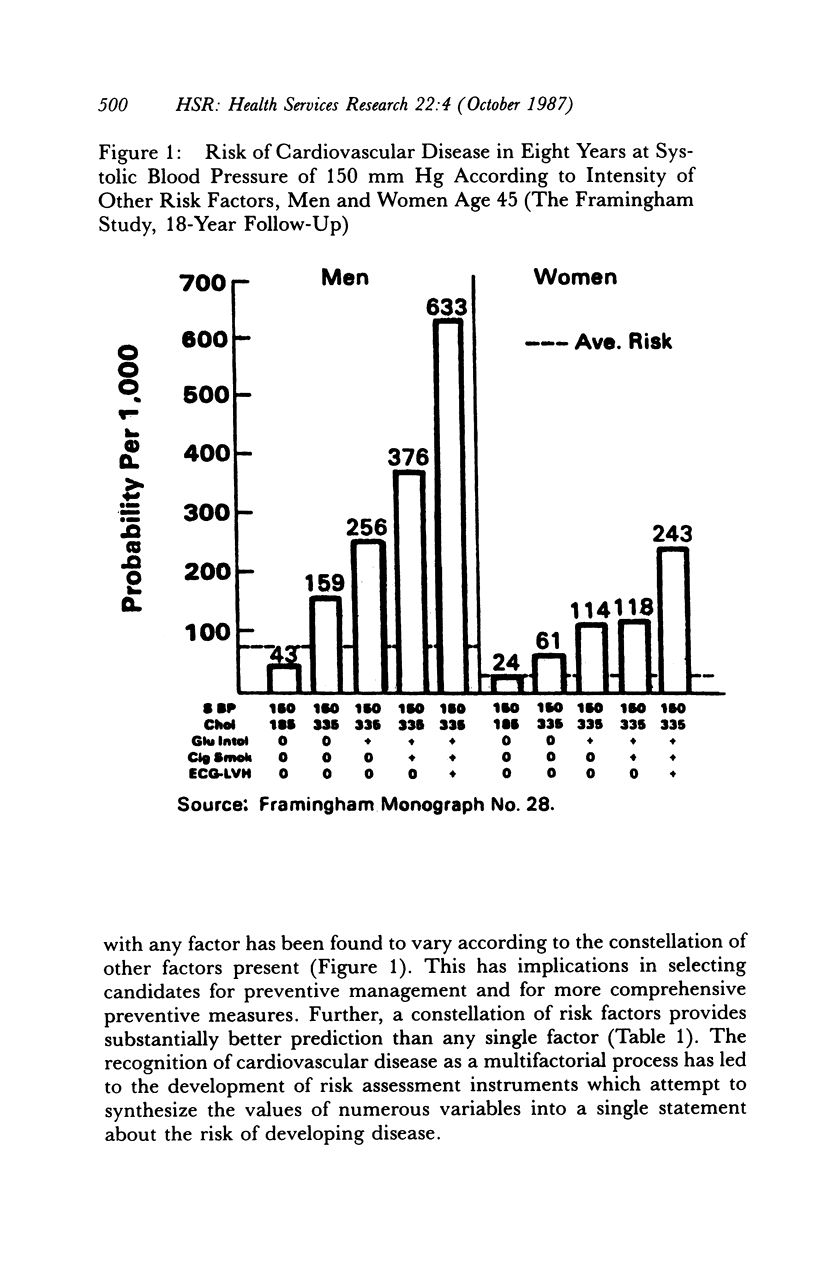
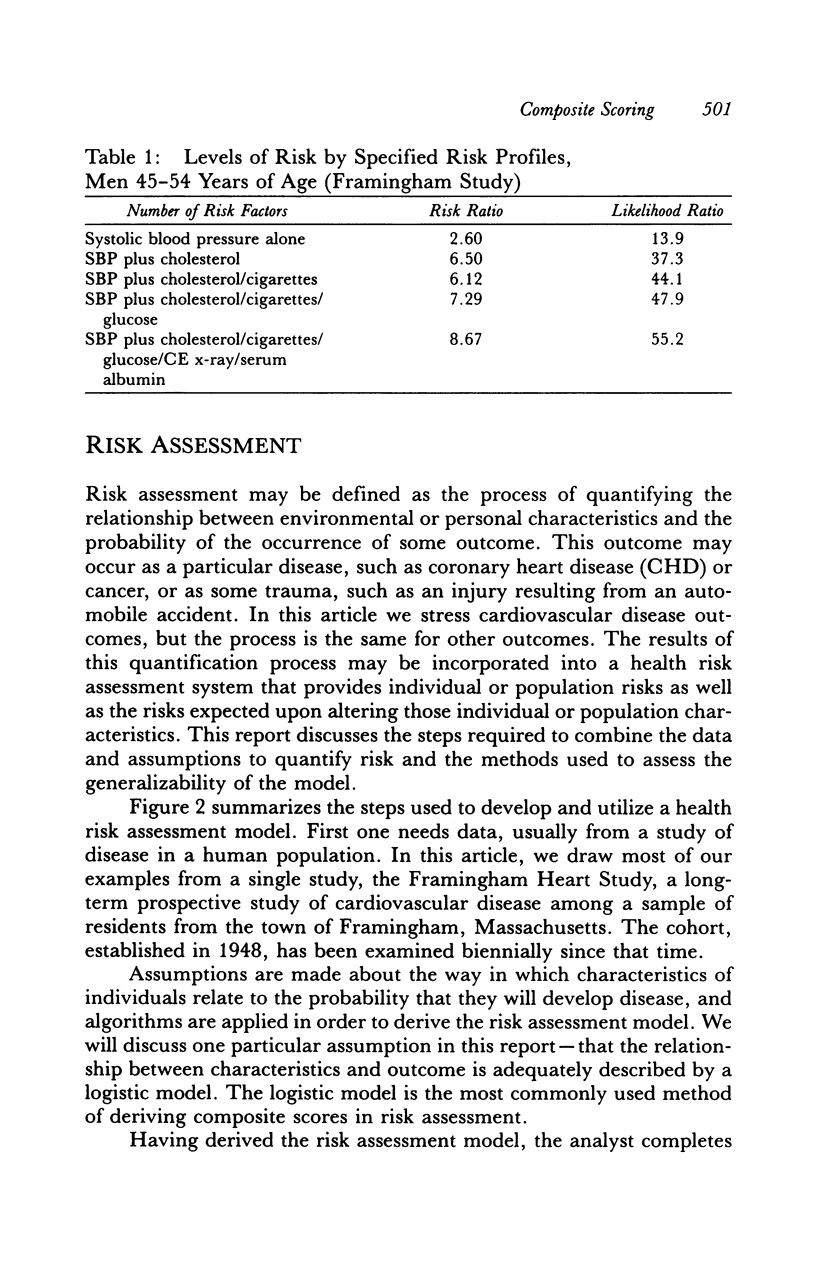
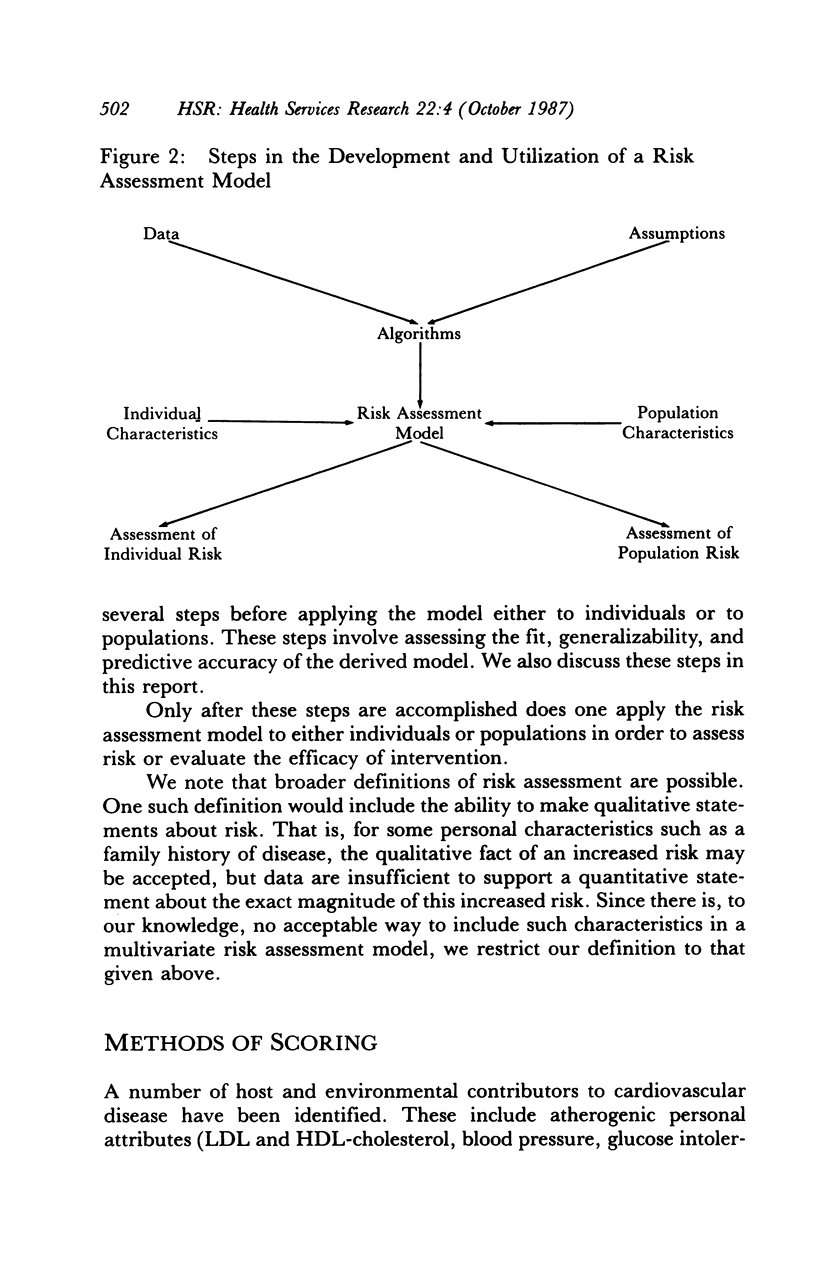
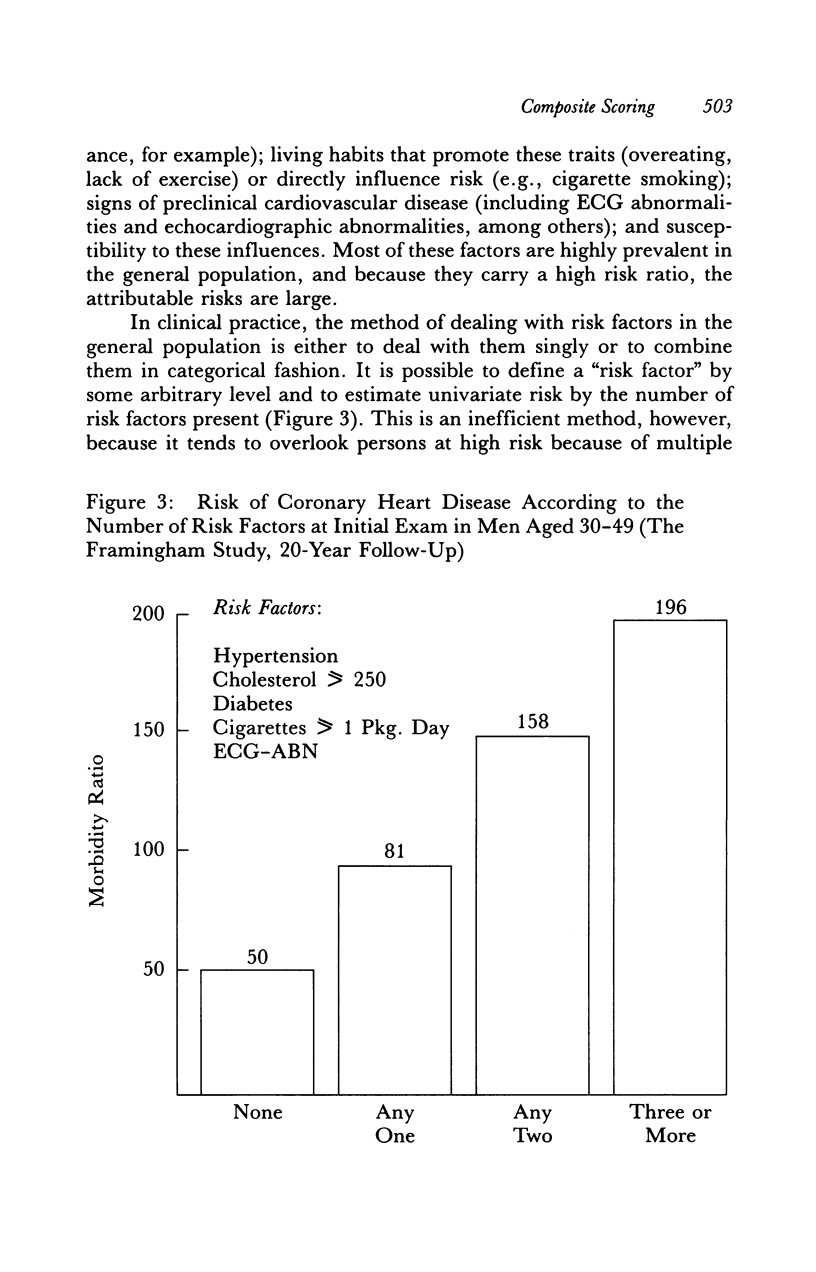
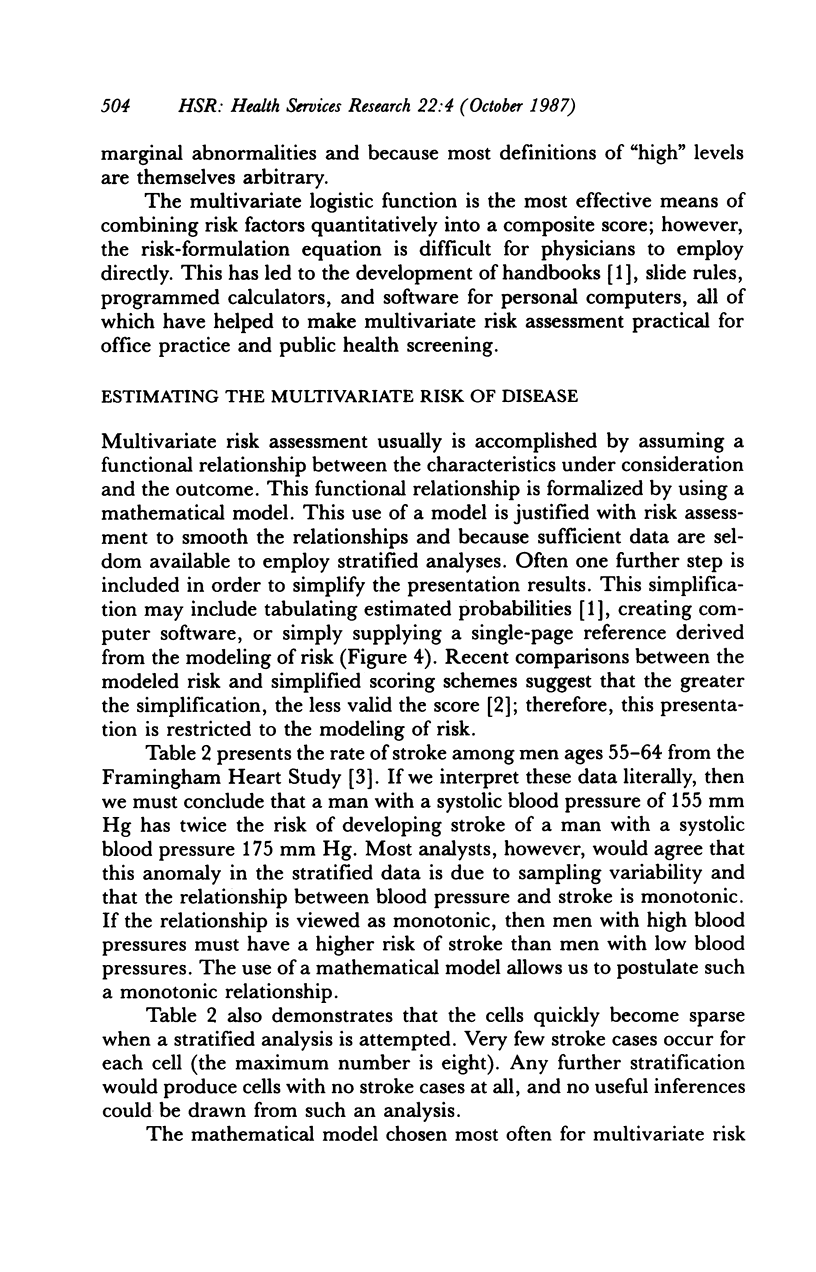
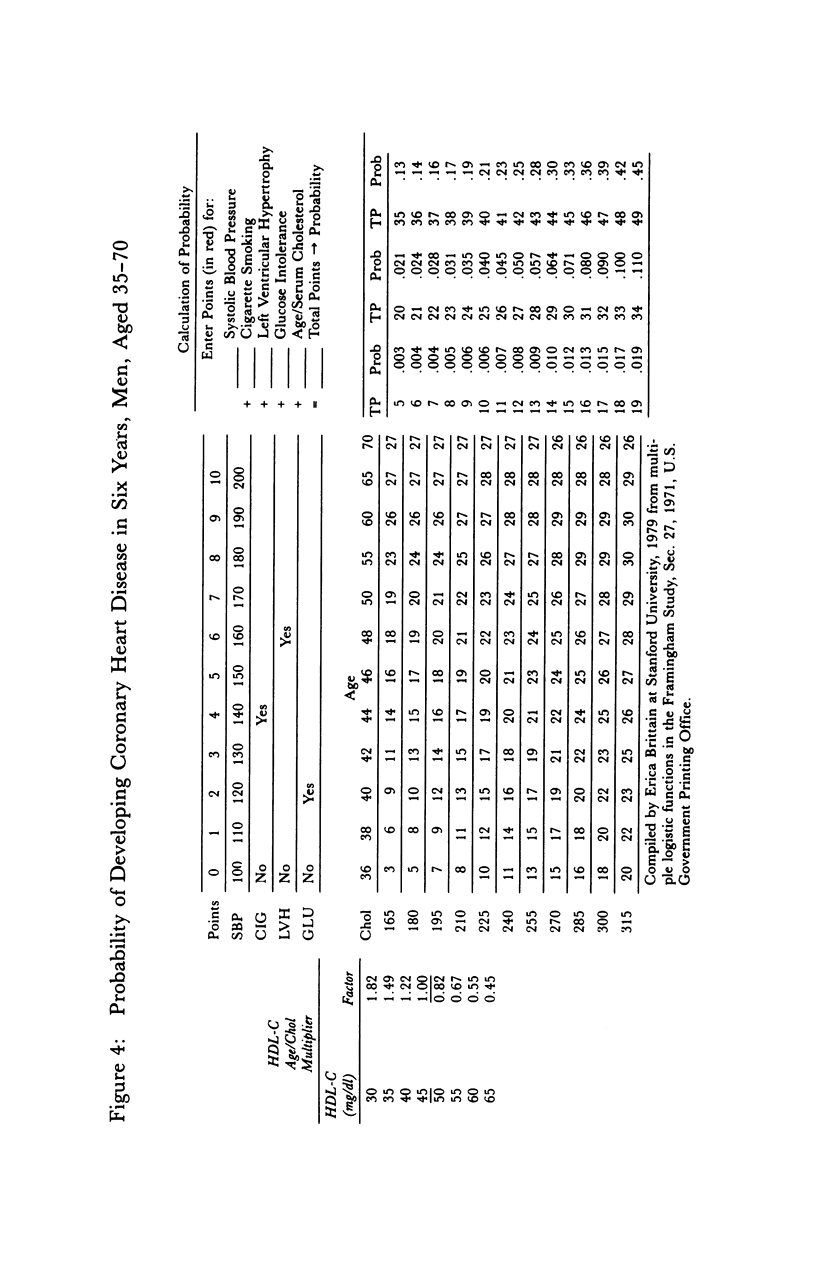
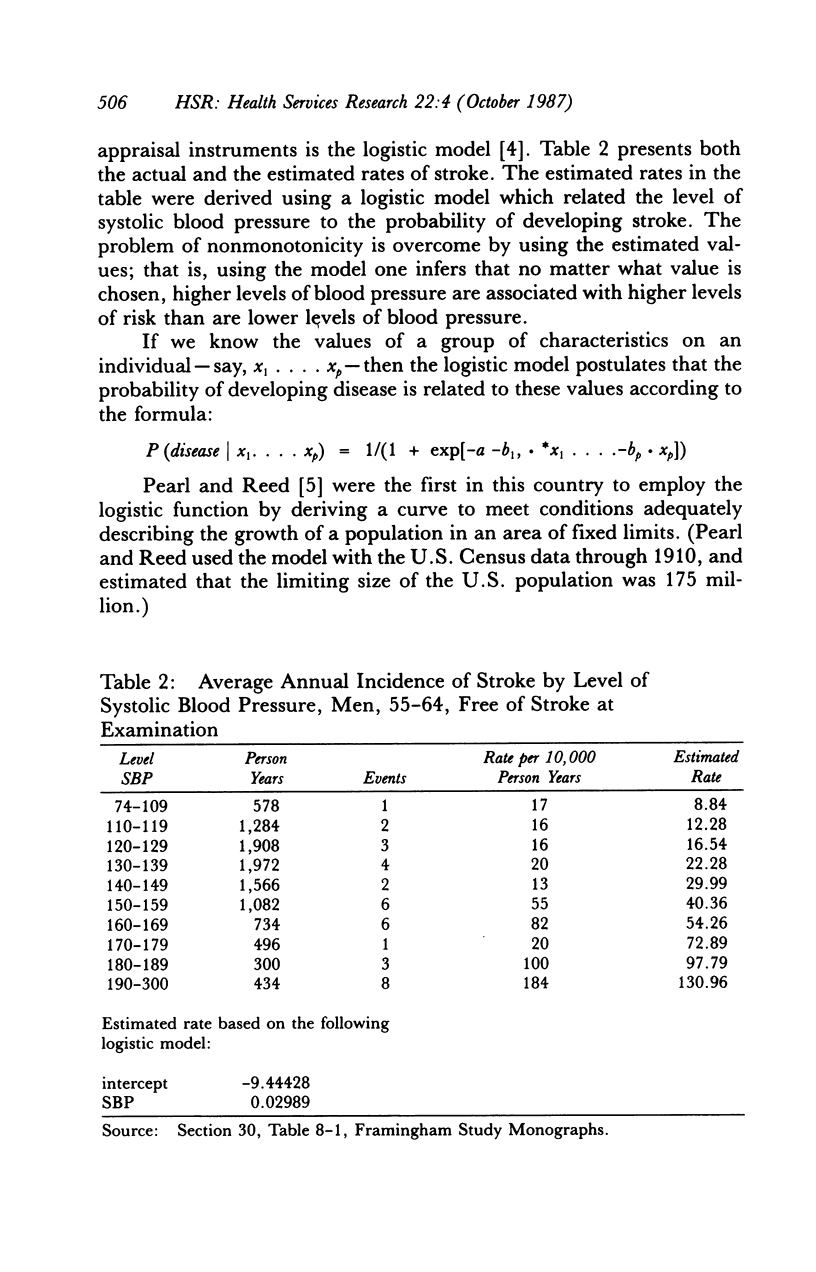
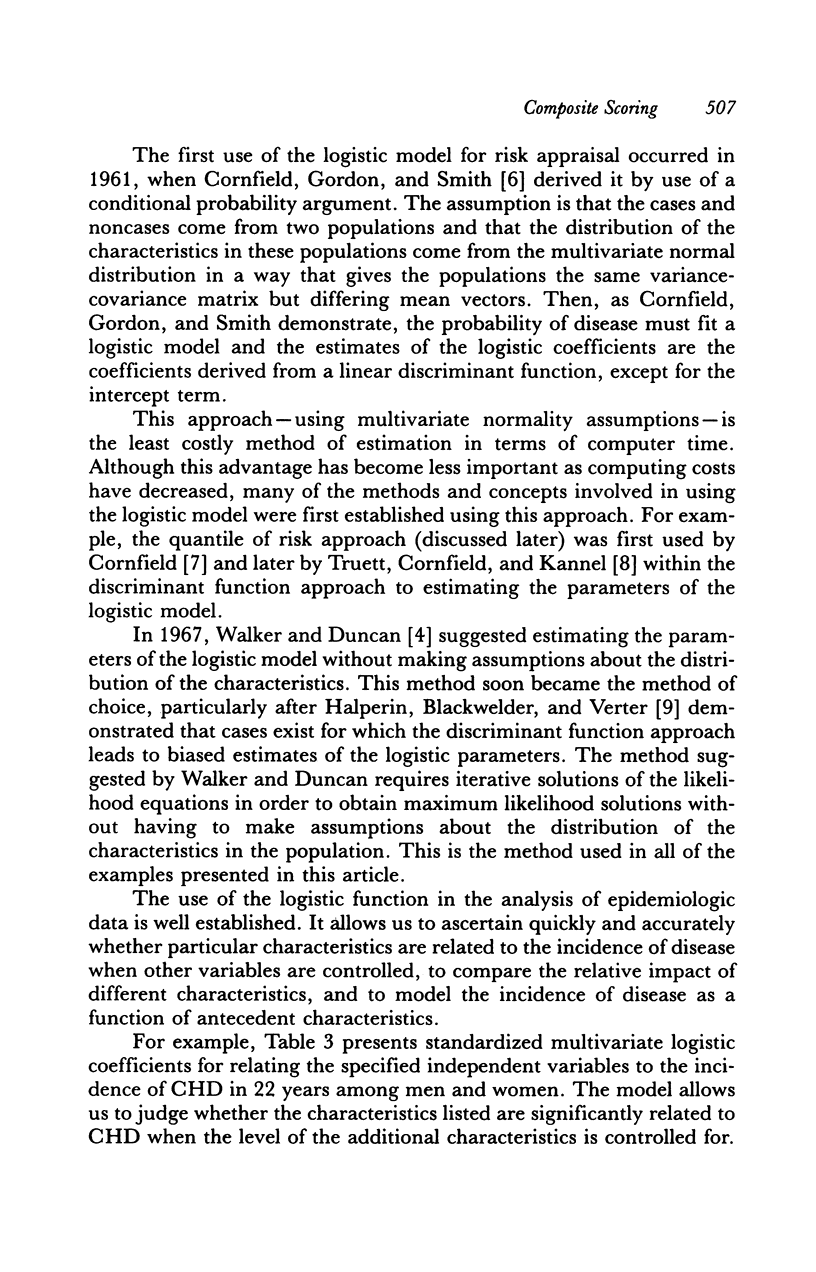
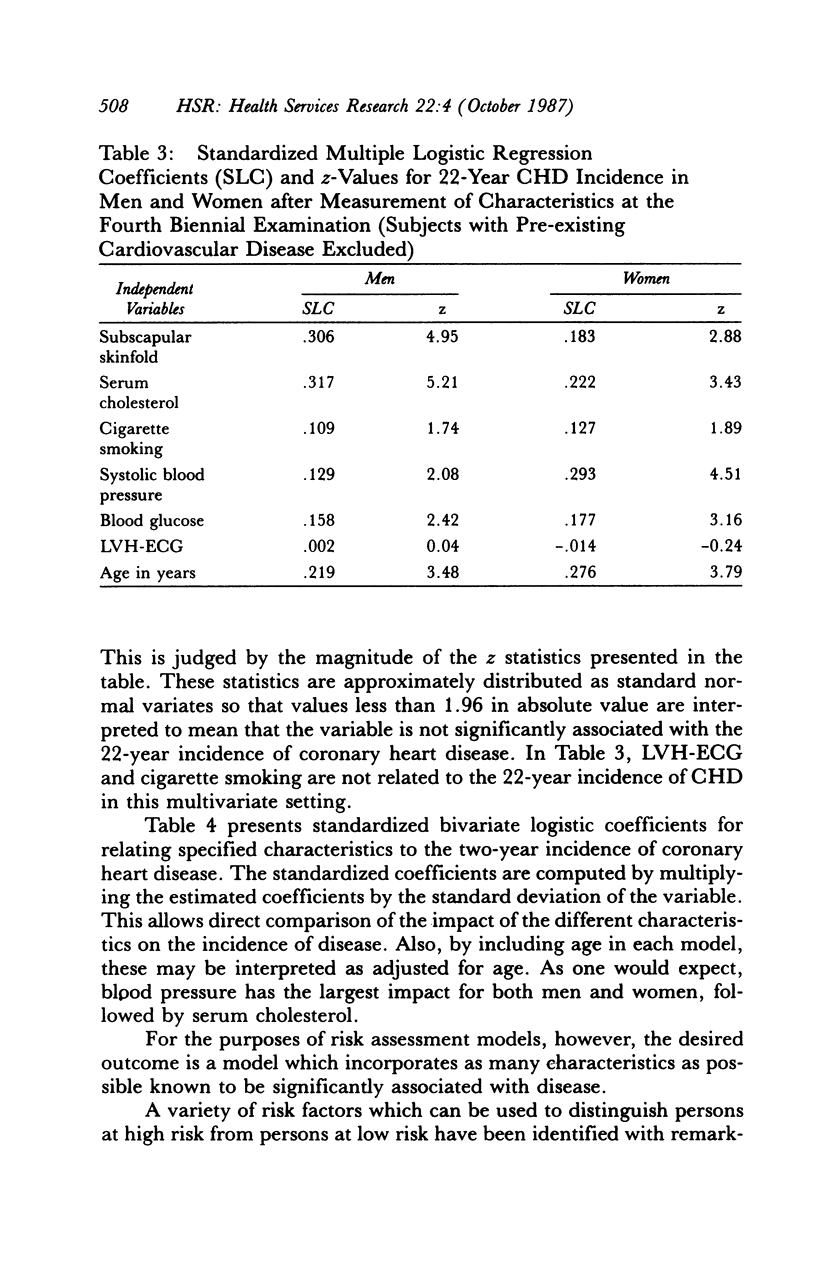
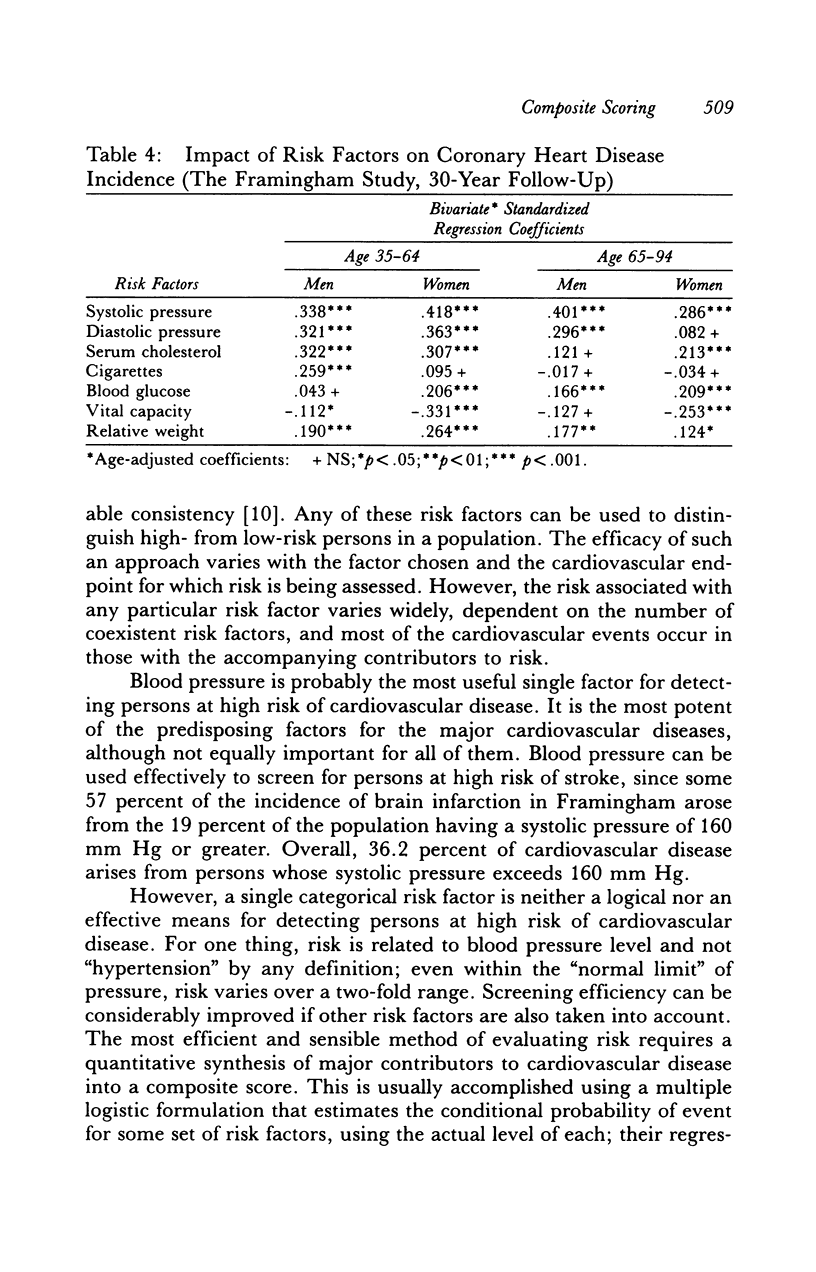

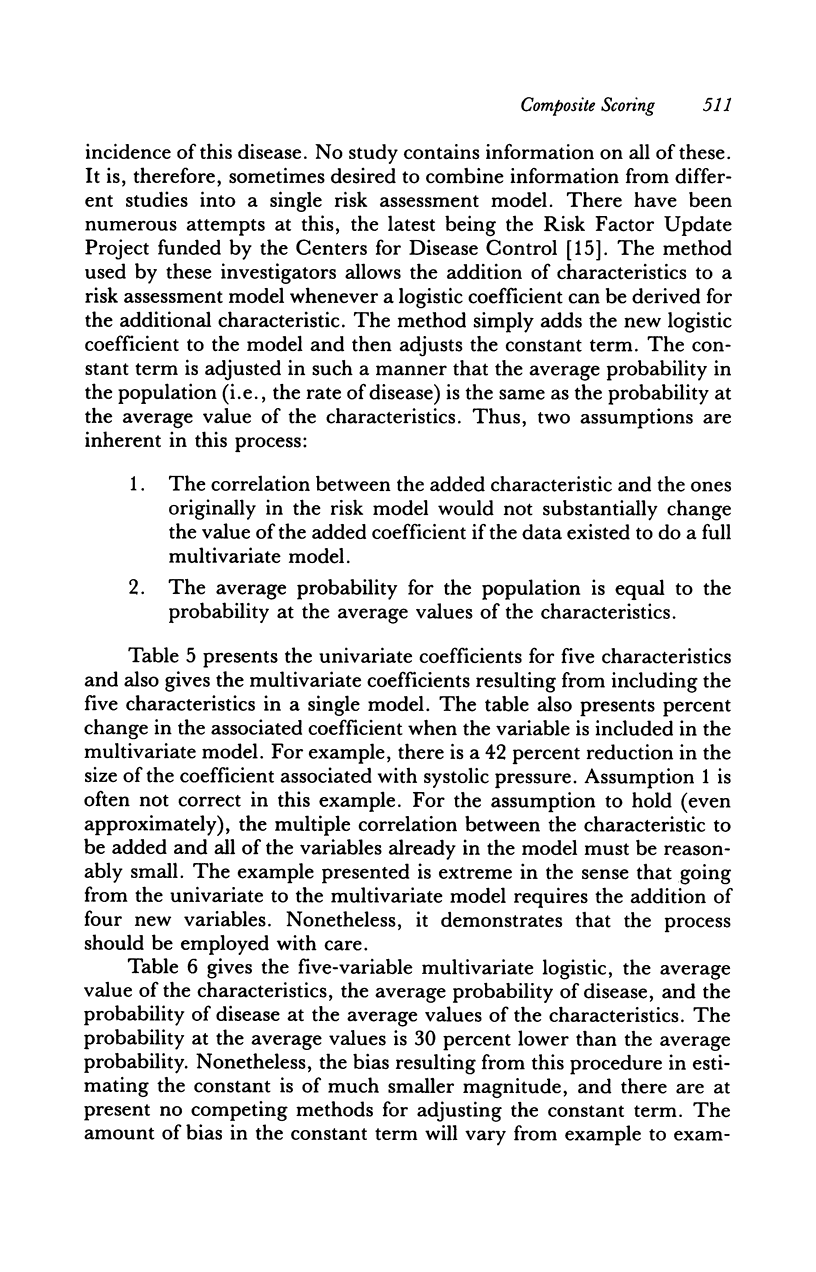
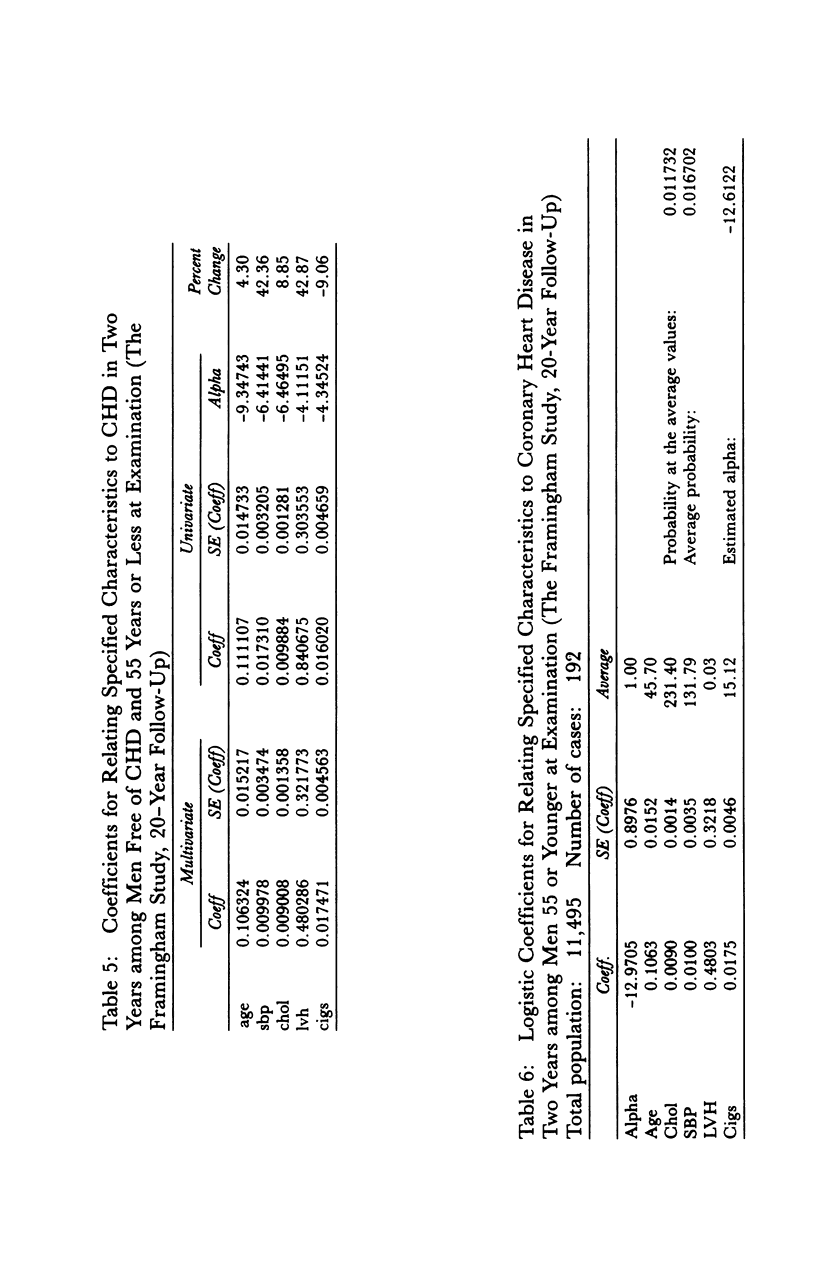
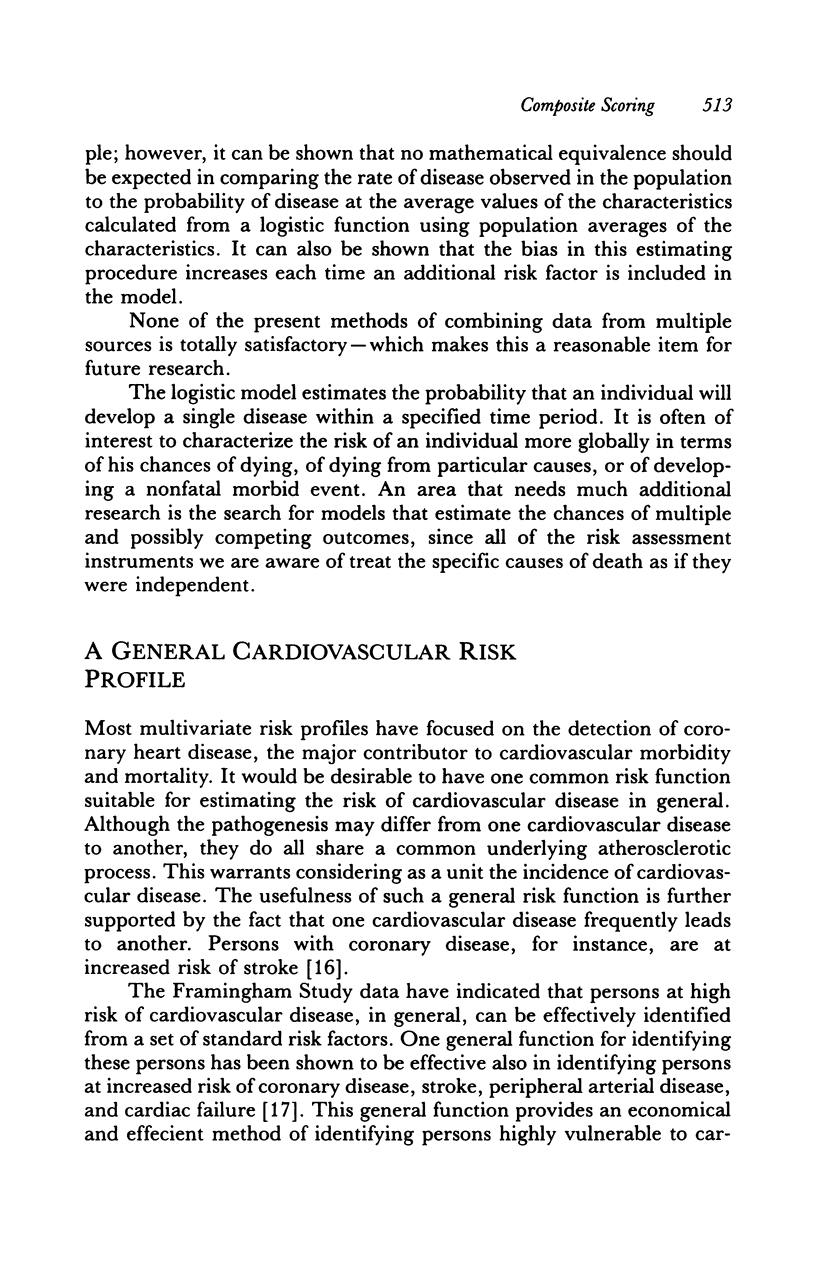
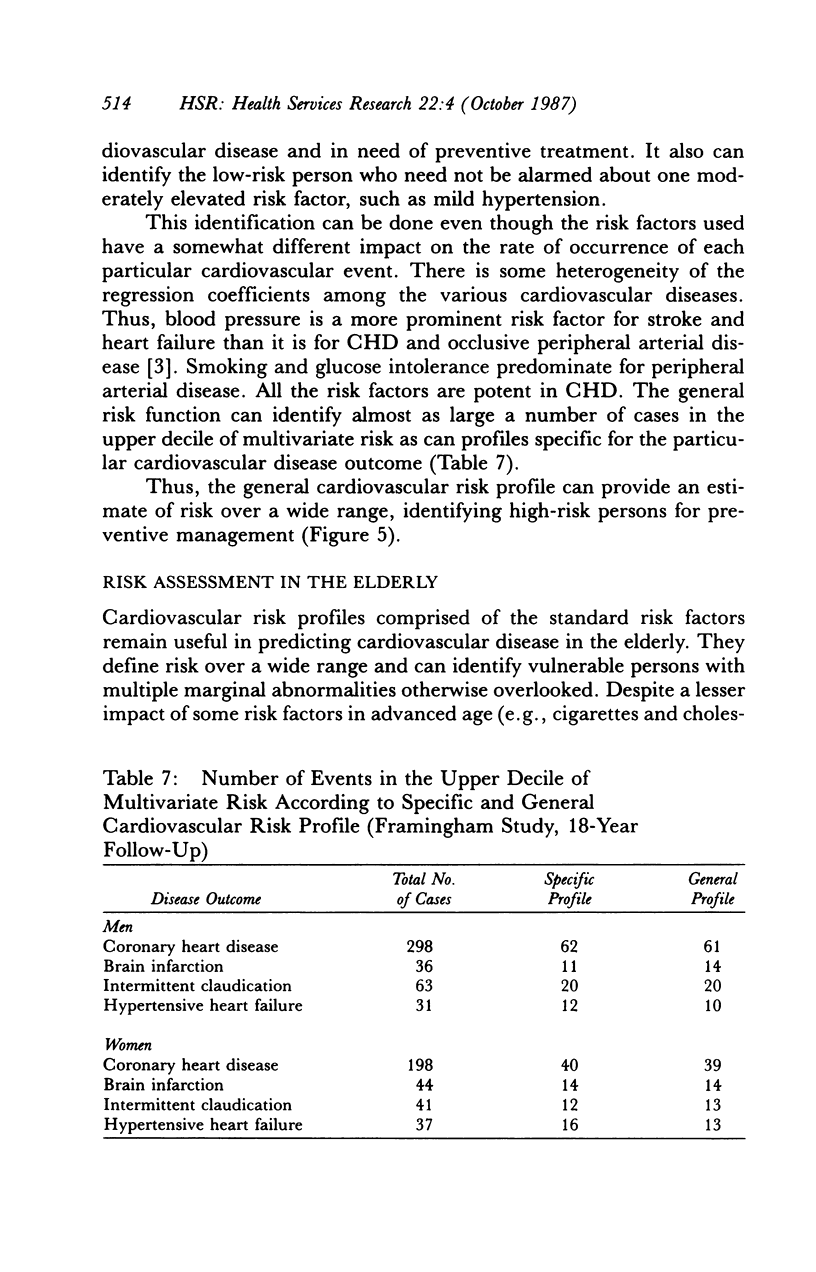
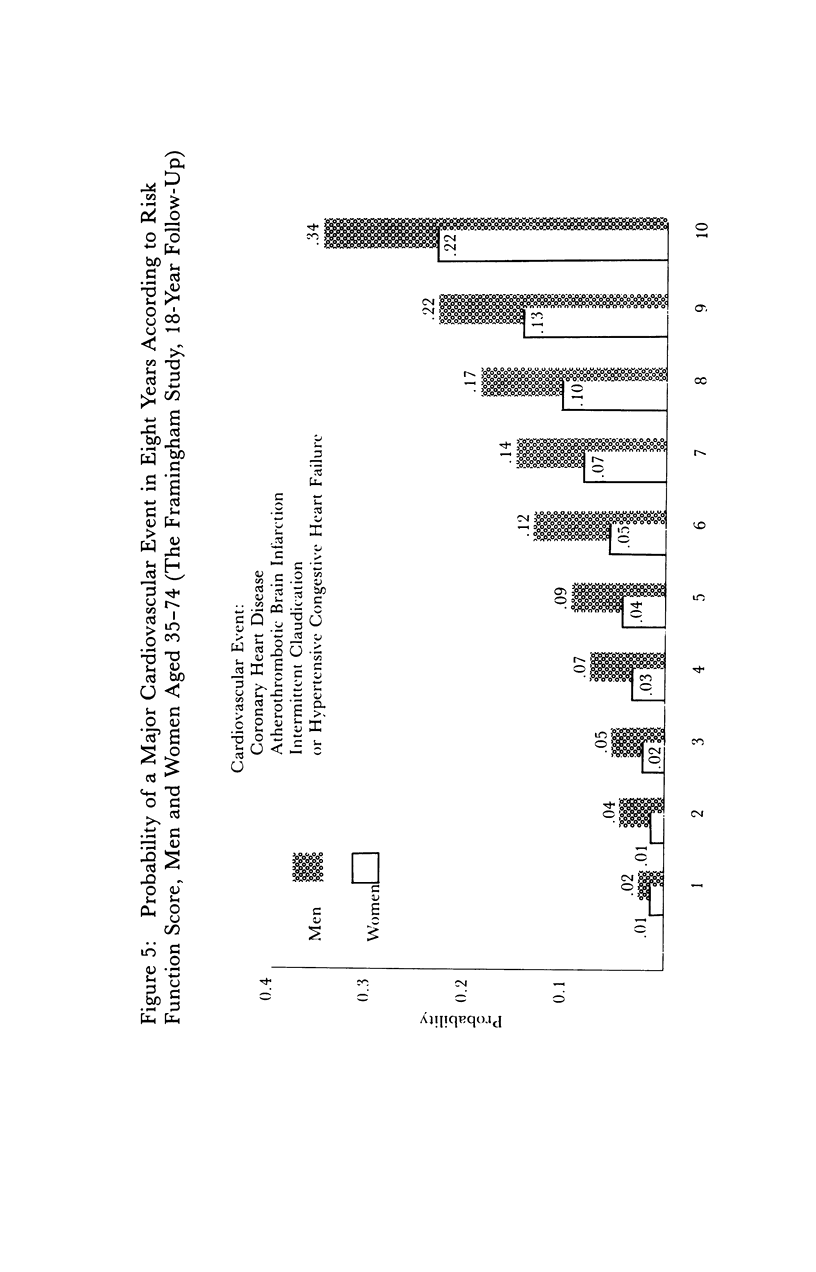
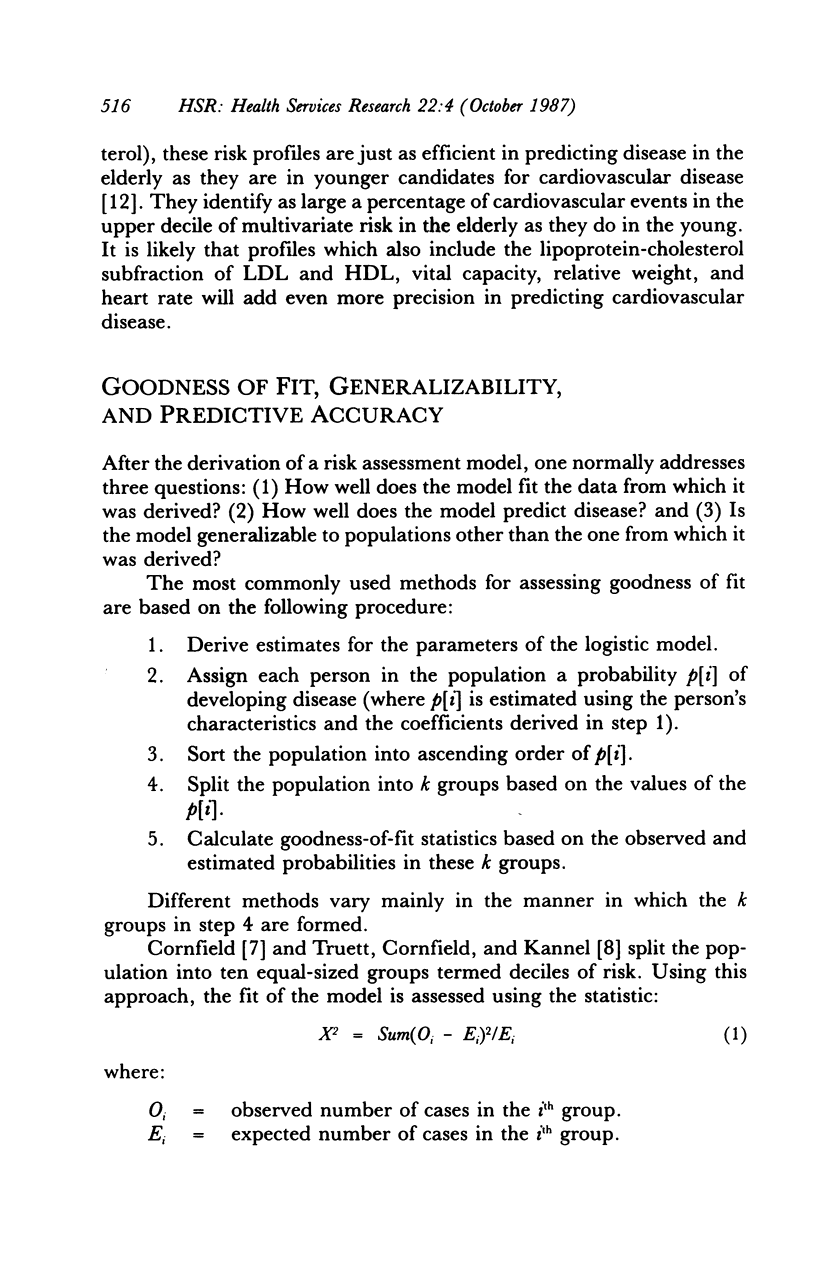
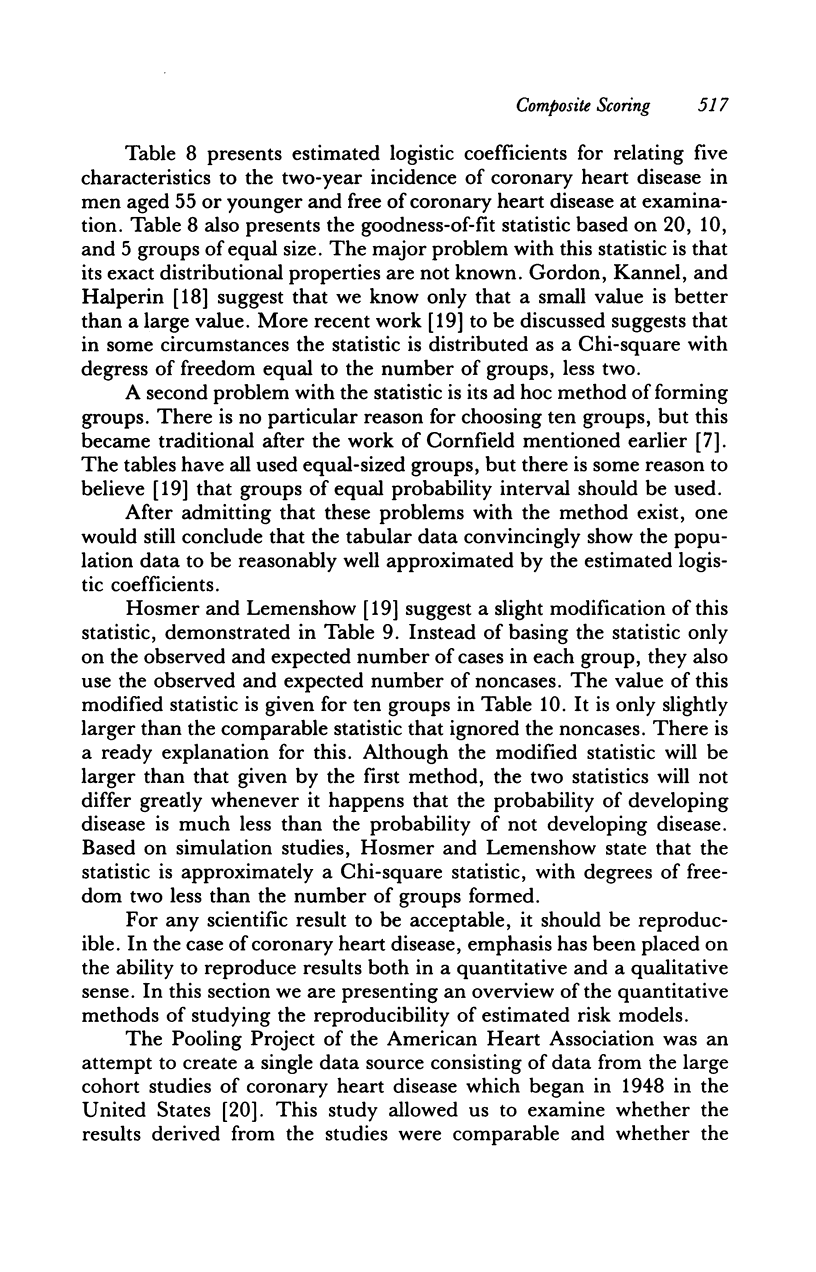

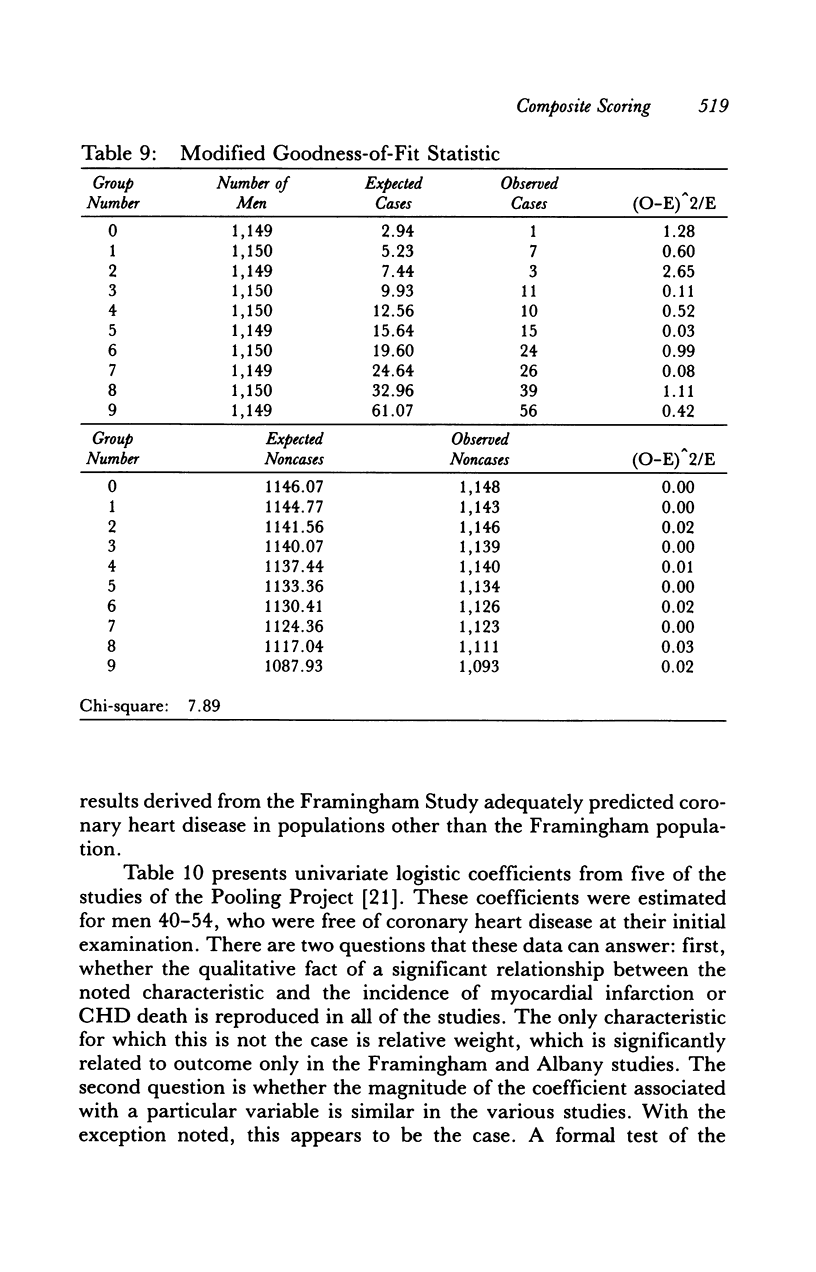


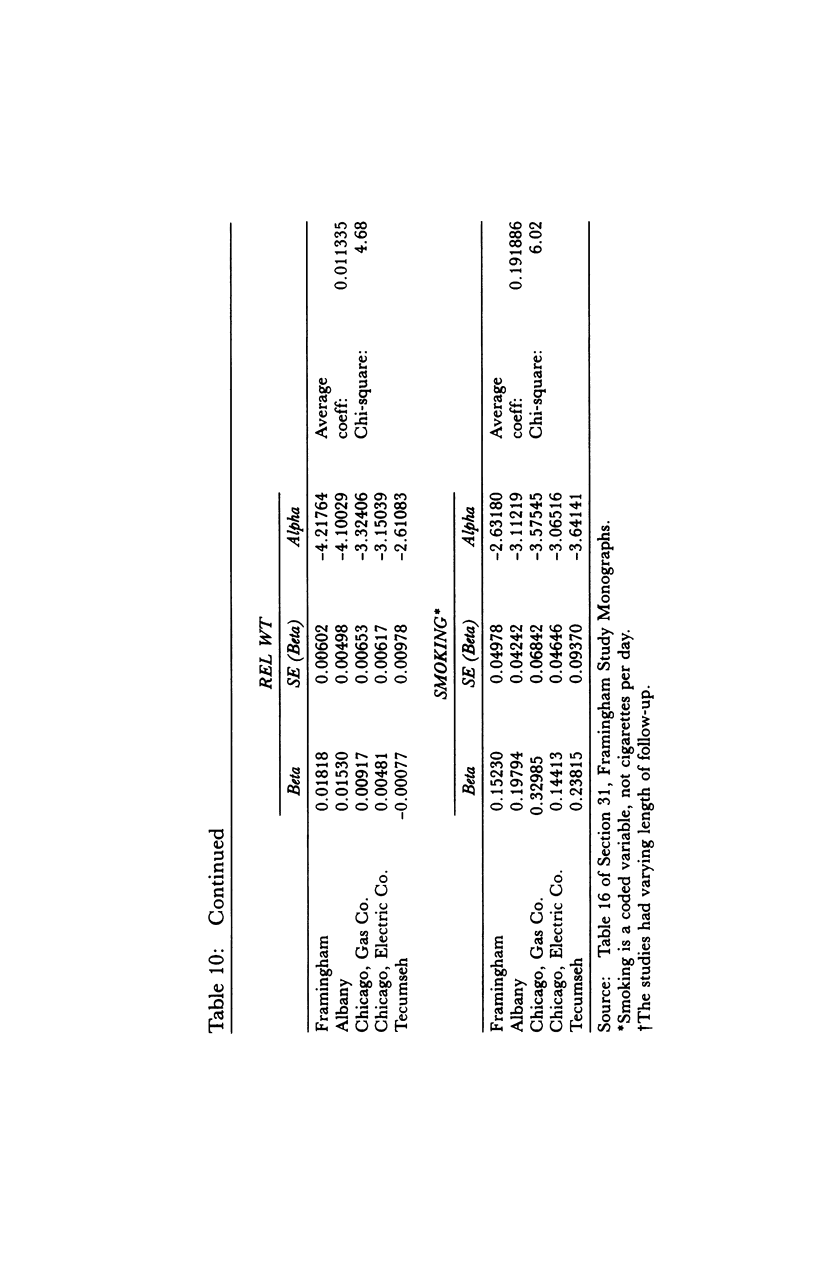
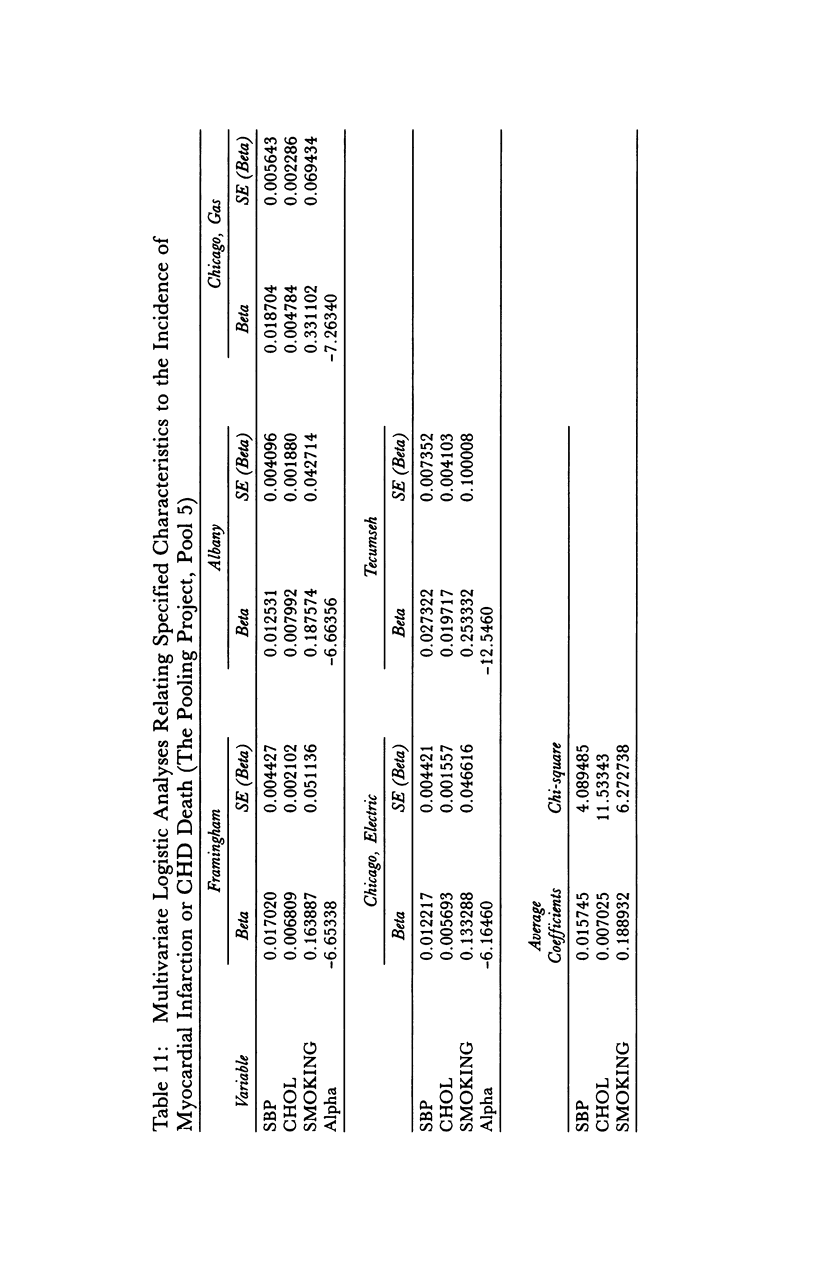
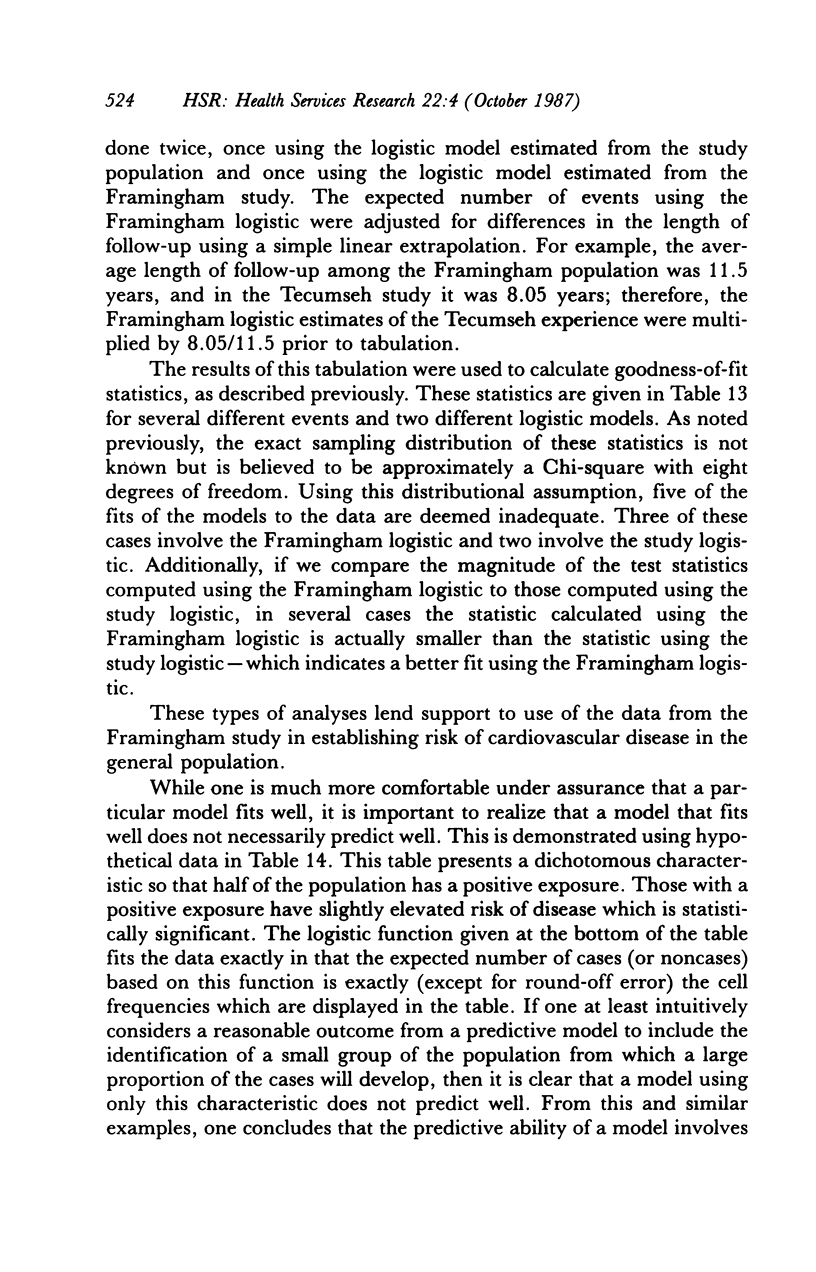
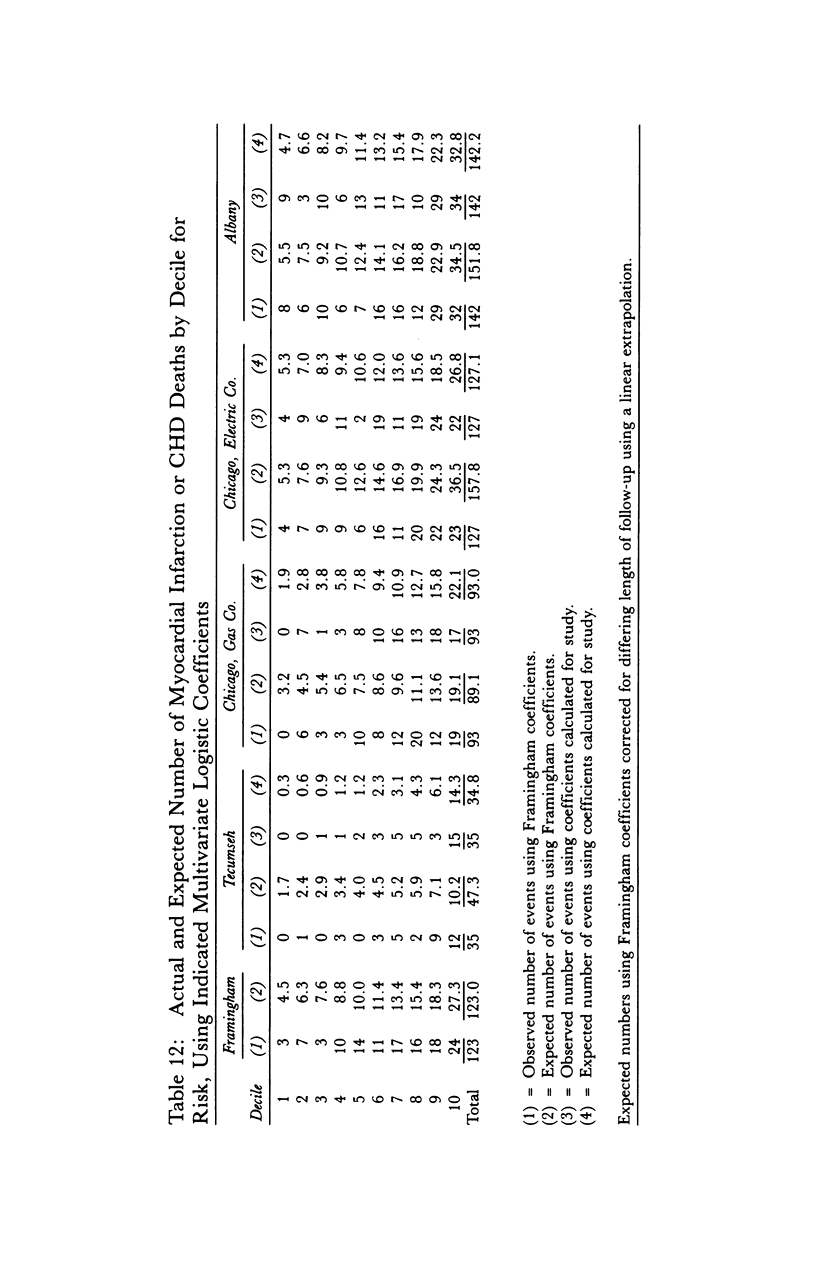
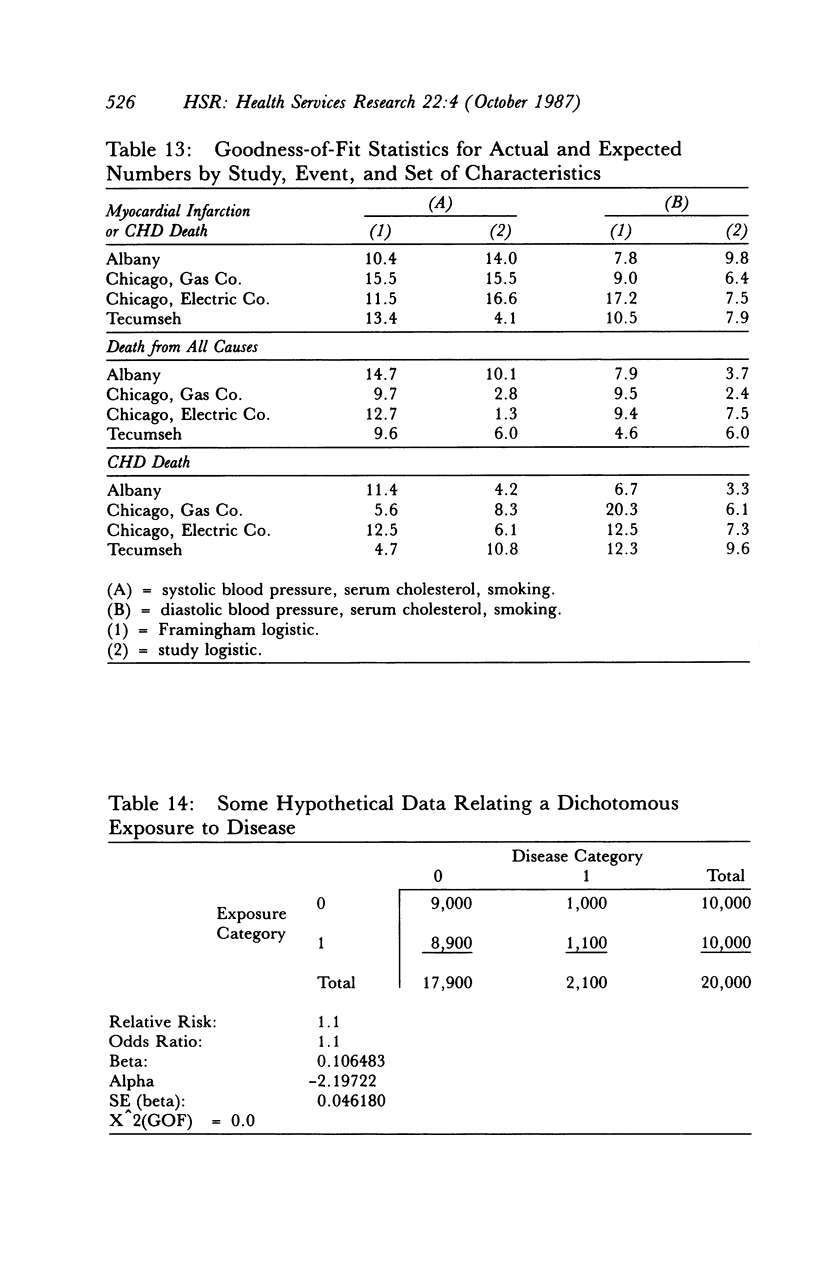
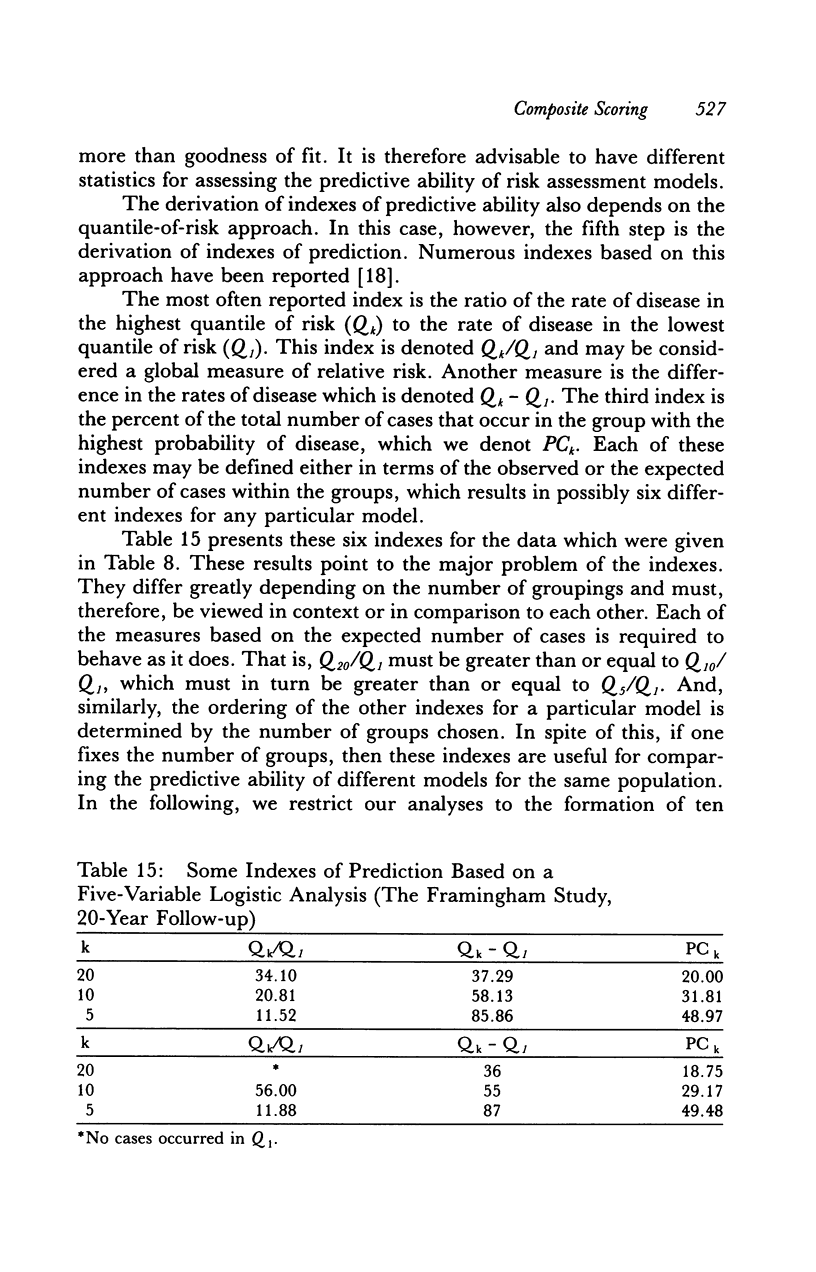
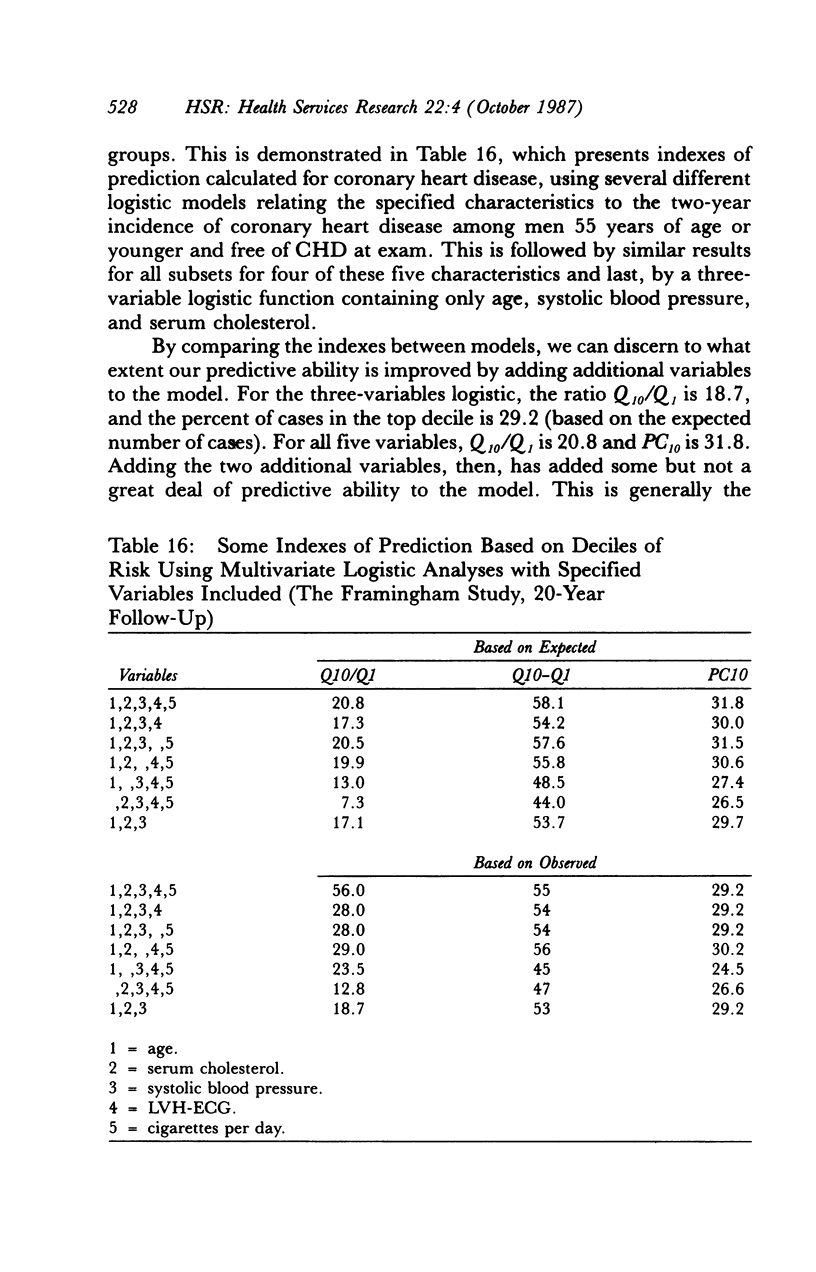
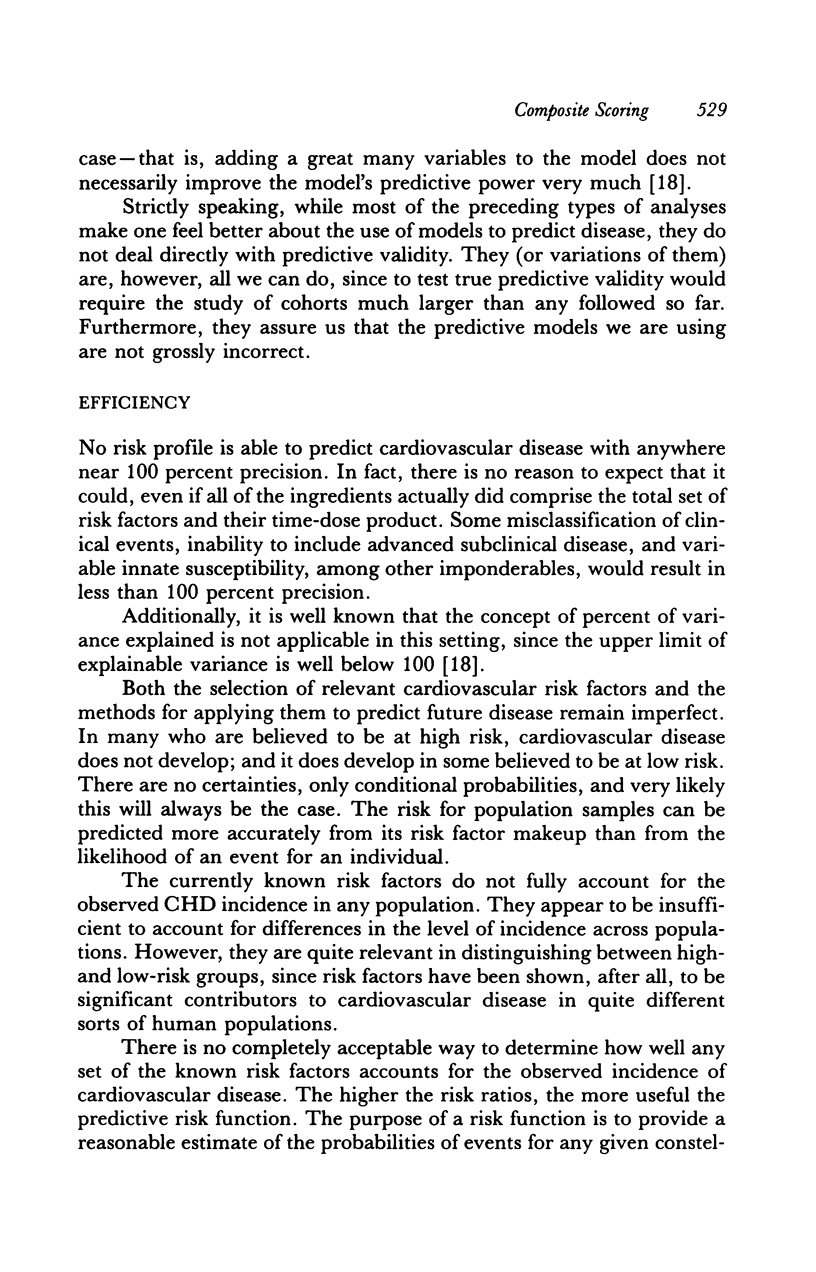
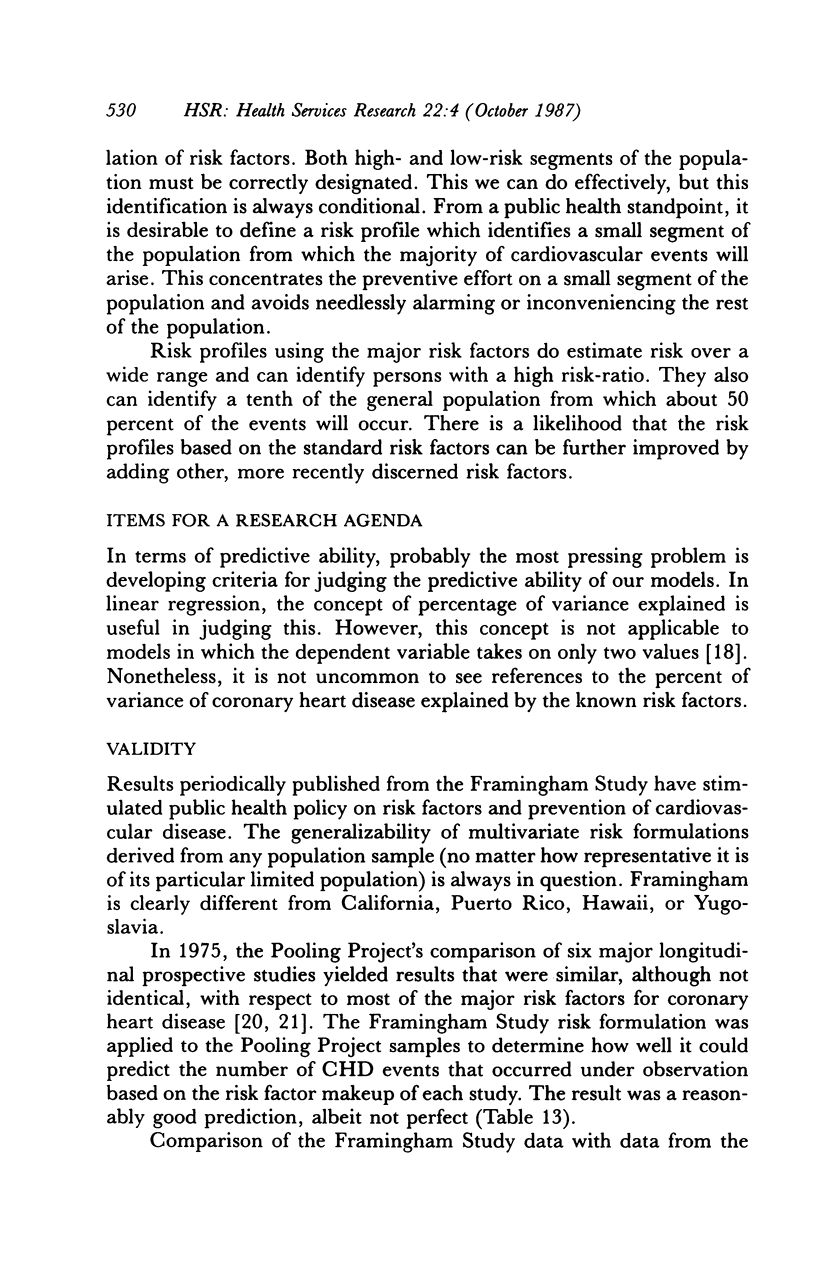
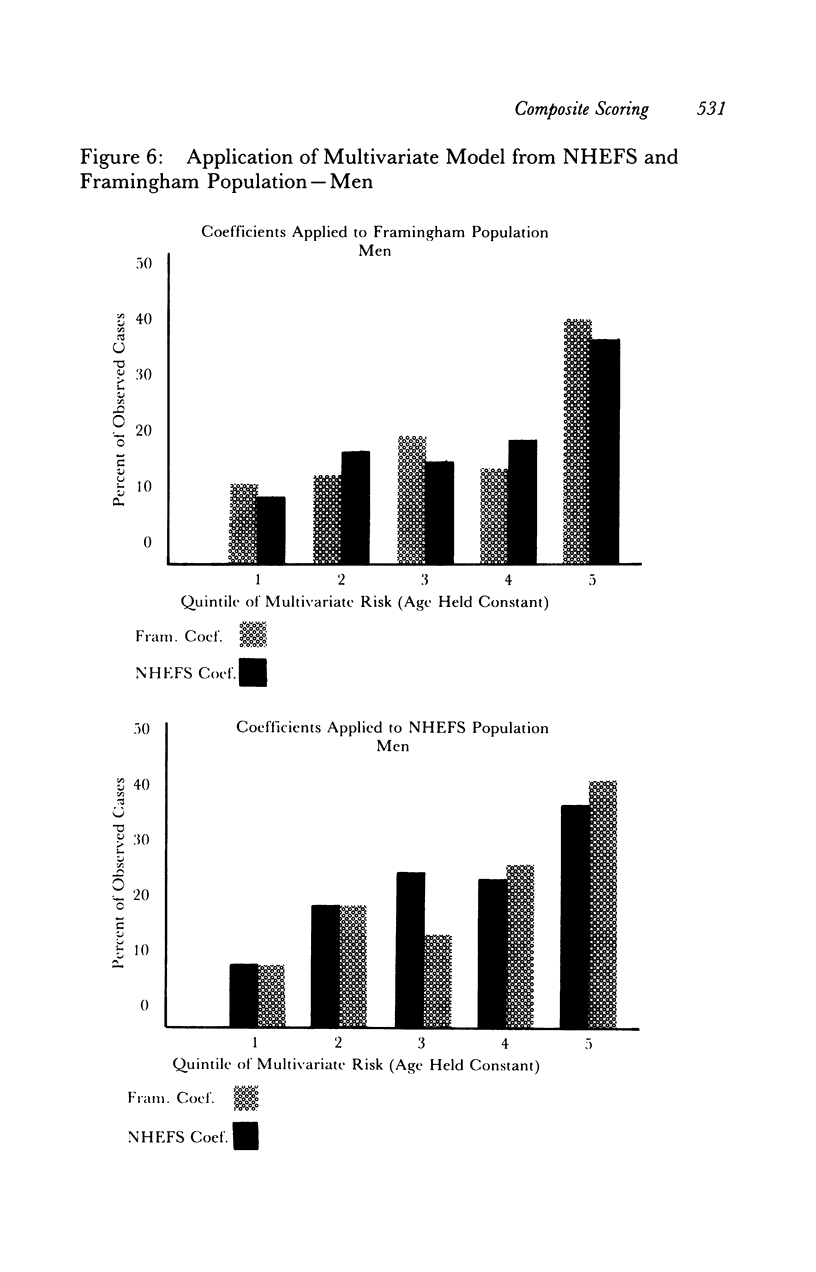
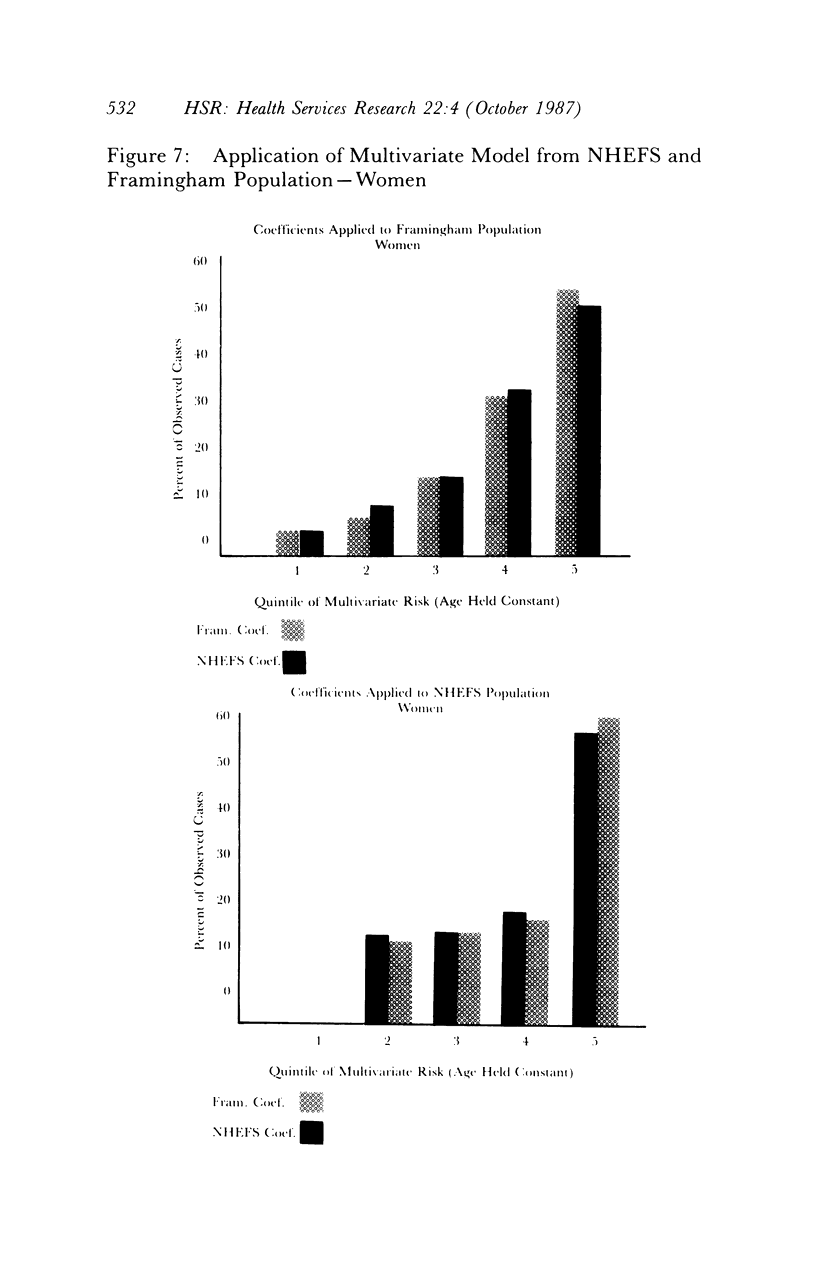


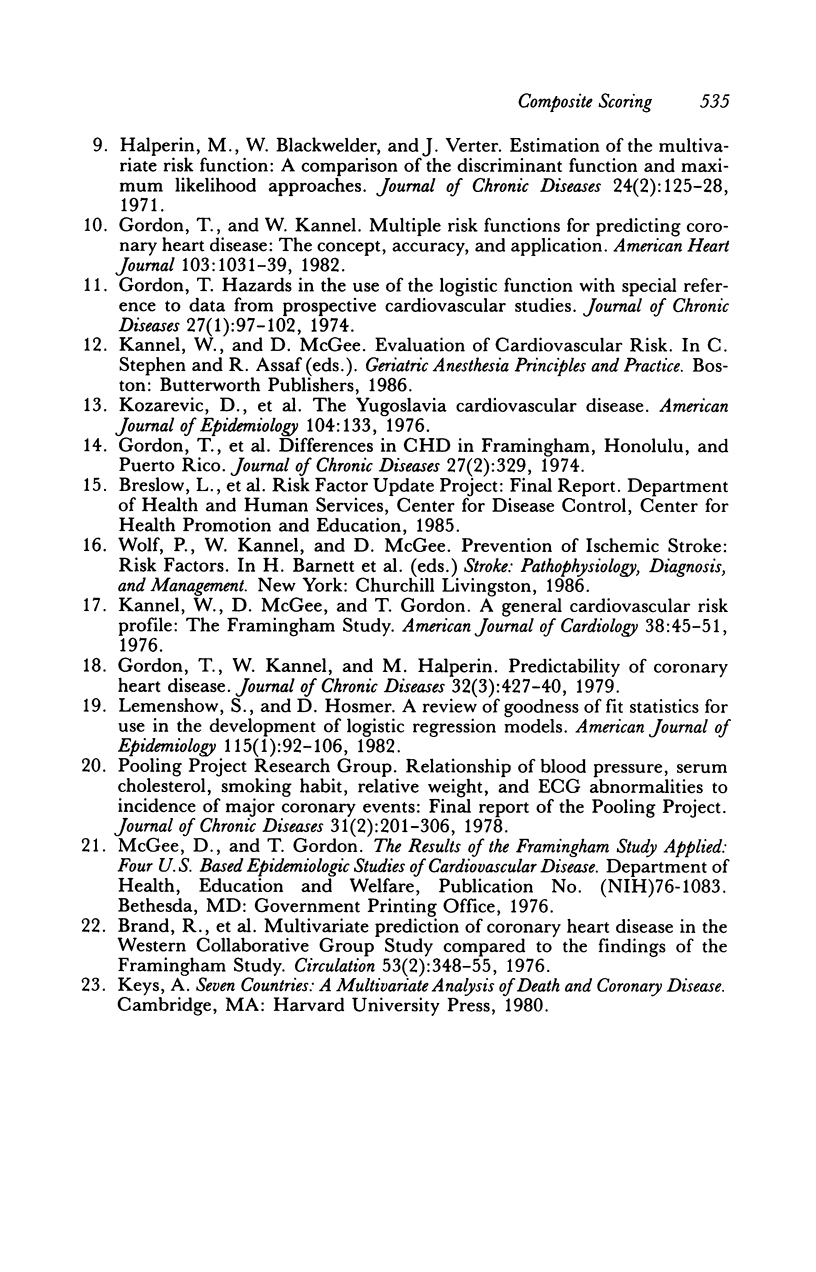
Selected References
These references are in PubMed. This may not be the complete list of references from this article.
- Brand R. J., Rosenman R. H., Sholtz R. I., Friedman M. Multivariate prediction of coronary heart disease in the Western Collaborative Group Study compared to the findings of the Framingham study. Circulation. 1976 Feb;53(2):348–355. doi: 10.1161/01.cir.53.2.348. [DOI] [PubMed] [Google Scholar]
- CORNFIELD J. Joint dependence of risk of coronary heart disease on serum cholesterol and systolic blood pressure: a discriminant function analysis. Fed Proc. 1962 Jul-Aug;21(4):58–61. [PubMed] [Google Scholar]
- Gordon T. Editorial: Hazards in the use of the logistic function with special reference to data from prospective cardiovascular studies. J Chronic Dis. 1974 Mar;27(3):97–102. doi: 10.1016/0021-9681(74)90078-2. [DOI] [PubMed] [Google Scholar]
- Gordon T., Garcia-Palmieri M. R., Kagan A., Kannel W. B., Schiffman J. Differences in coronary heart disease in Framingham, Honolulu and Puerto Rico. J Chronic Dis. 1974 Sep;27(7-8):329–344. doi: 10.1016/0021-9681(74)90013-7. [DOI] [PubMed] [Google Scholar]
- Gordon T., Kannel W. B., Halperin M. Predictability of coronary heart disease. J Chronic Dis. 1979;32(6):427–440. doi: 10.1016/0021-9681(79)90103-6. [DOI] [PubMed] [Google Scholar]
- Gordon T., Kannel W. B. Multiple risk functions for predicting coronary heart disease: the concept, accuracy, and application. Am Heart J. 1982 Jun;103(6):1031–1039. doi: 10.1016/0002-8703(82)90567-1. [DOI] [PubMed] [Google Scholar]
- Halperin M., Blackwelder W. C., Verter J. I. Estimation of the multivariate logistic risk function: a comparison of the discriminant function and maximum likelihood approaches. J Chronic Dis. 1971 Jul;24(2):125–158. doi: 10.1016/0021-9681(71)90106-8. [DOI] [PubMed] [Google Scholar]
- Kozarević D., Pirc B., Racić Z., Dawber T. R., Gordon T., Zukel W. J. The Yugoslavia cardiovascular disease study. II. Factors in the incidence of coronary heart disease. Am J Epidemiol. 1976 Aug;104(2):133–140. doi: 10.1093/oxfordjournals.aje.a112283. [DOI] [PubMed] [Google Scholar]
- Lemeshow S., Hosmer D. W., Jr A review of goodness of fit statistics for use in the development of logistic regression models. Am J Epidemiol. 1982 Jan;115(1):92–106. doi: 10.1093/oxfordjournals.aje.a113284. [DOI] [PubMed] [Google Scholar]
- Pearl R., Reed L. J. On the Rate of Growth of the Population of the United States since 1790 and Its Mathematical Representation. Proc Natl Acad Sci U S A. 1920 Jun;6(6):275–288. doi: 10.1073/pnas.6.6.275. [DOI] [PMC free article] [PubMed] [Google Scholar]
- Truett J., Cornfield J., Kannel W. A multivariate analysis of the risk of coronary heart disease in Framingham. J Chronic Dis. 1967 Jul;20(7):511–524. doi: 10.1016/0021-9681(67)90082-3. [DOI] [PubMed] [Google Scholar]
- Walker S. H., Duncan D. B. Estimation of the probability of an event as a function of several independent variables. Biometrika. 1967 Jun;54(1):167–179. [PubMed] [Google Scholar]


